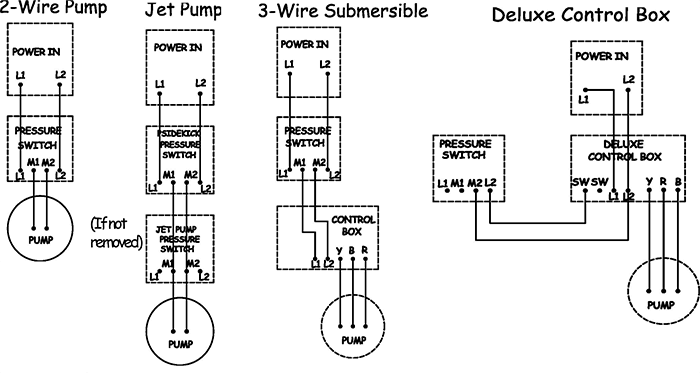PK1A Pside-Kick: Installation Instructions
Step 1
The Pside-Kick® can be installed vertically (upright or upside down), horizontally, wall stud mount, or pipe mount.
Mount to wall (if not mounting to wall, skip to step 2)
- Thread two lock nuts on each all thread bolt about 2" in. Thread the wall bracket on one end of the 3/8" x 6 all thread bolt and thread clamp to other end of it.
- Attach the clamps to the CSV1A with the bolts but do not tighten. Hold manifold to wall over a stud and mark the holes.
- Remove clamps from CSV1A and use wall screws to mount wall brackets to wall stud.

Step 2
Wrap threads on all male fittings (1/4" x close nipples, 1/2" x 1/4" reducer bushing, 1/4" x 1/4" snubber, 1/2" PRV, pressure gauge, and pressure tank) with 5-7 layers of teflon tape.

Step 3
Assemble the valve/manifold as shown below. Be sure to thread the manifold on to the pressure tank last. The PRV will need to be plumbed to a drain or outside. If mounting to the wall, do not install pressure tank or pressure gauge until manifold has been mounted to wall. This kit can be installed in any position...tank up, down, or sideways.

Testing the System
Important Note: Be sure all pipe fittings between the pump and the Pside-Kick® are rated to handle the maximum pressure the pump can build at shut off or dead head.
-
Before attaching system pipe to the Pside-Kick®, attach power wire to pressure switch and pump as per pressure switch wiring diagrams below and run pump until water is clear so that you don't fill up the kit with debris.

- Once the water being pumped is clean, connect the pump discharge piping to the intake of the CSV1A (see direction of flow arrow on valve casting).
- Open your hose bib or faucet to a 2-3 gpm demand or flow. Turn on the pump (if there are any leaks, tighten fittings as necessary).
- Run pump until air is out of the system and check to make sure the Cycle Stop Valve is holding approximately 50 PSI and the pump does not cycle off (the pump stays running).
- Close your hose bib/faucet (it should take your pump approximately 30-45 seconds to turn off at 60 PSI). After the pump turns off, open your hose bib/faucet again to a 2-3 gpm flow. The pressure should begin to drop as the pressure tank empties. Once system pressure drops to 40 PSI, the pump should come back on. Once the pressure reaches 50 PSI, the CSV1A will begin to control the pump and the pressure should stop rising and hold constant as long as a demand of more than 1 gpm is being used.

